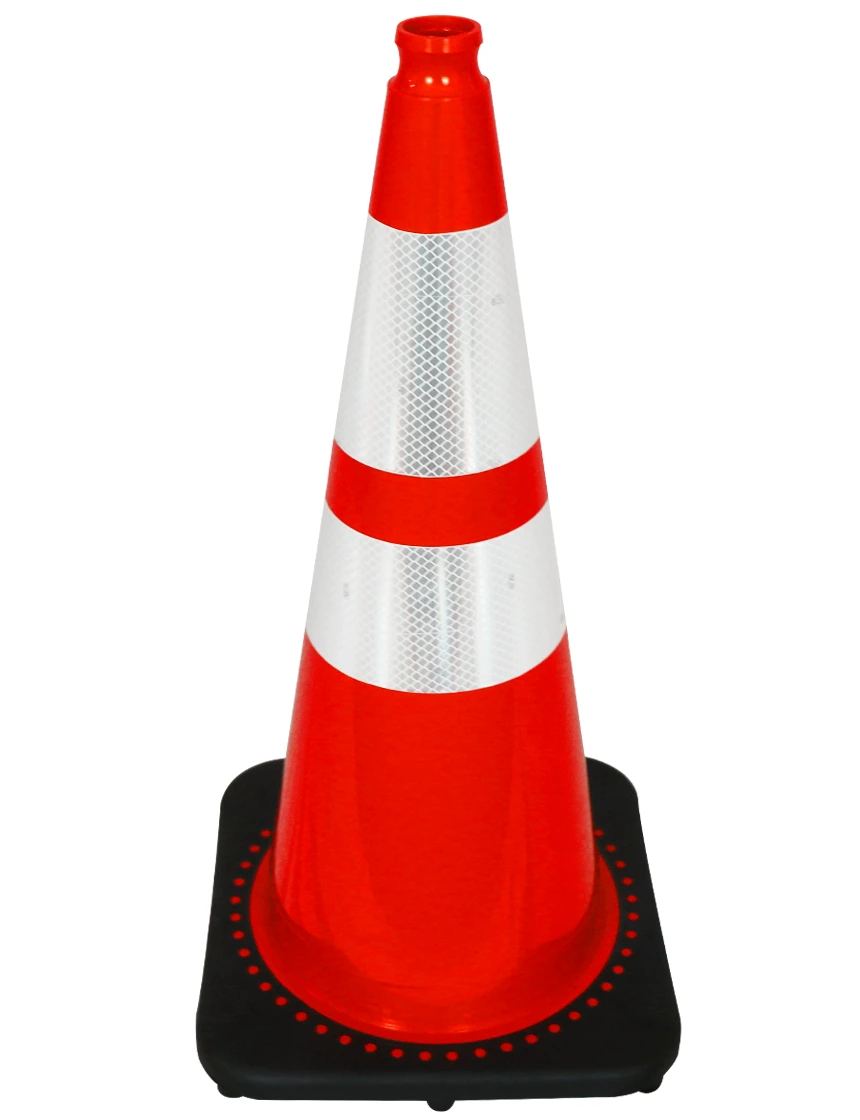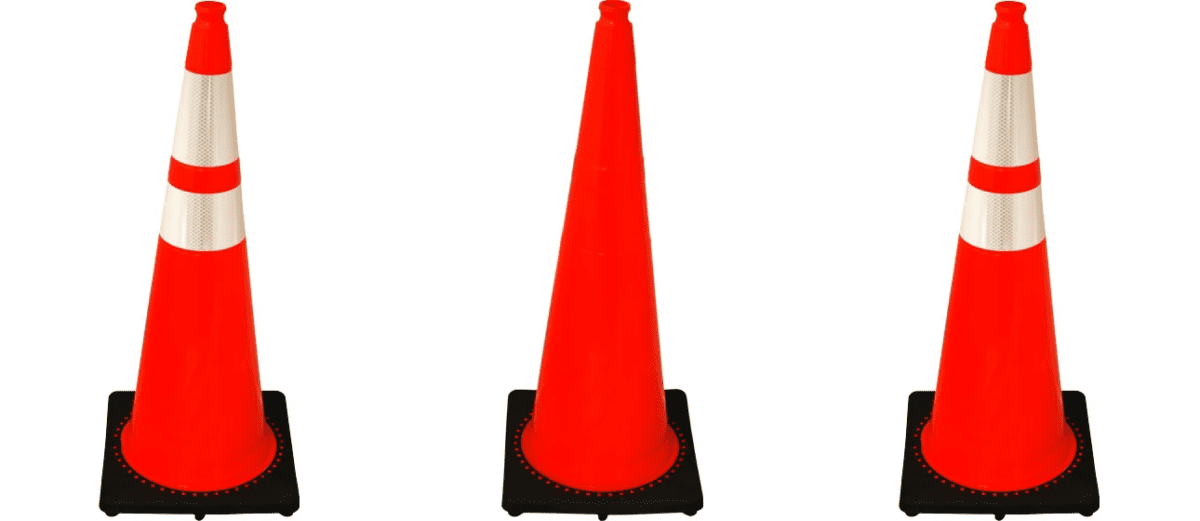When It Comes to Cones, Orange Is Still King
If you’ve driven by a construction site or through a work zone, you’ve undoubtedly seen the bright orange traffic cones. These iconic safety markers help guide drivers, protect workers, and set clear boundaries wherever roadway or roadside work is taking place. Although traffic cones can come in a range of colors—from lime green and blue to red, yellow, white, and even black—orange remains the dominant choice. Below, we’ll explore why orange continues to reign supreme and how the Manual on Uniform Traffic Control Devices (MUTCD) plays a pivotal role in that decision.1. High Visibility and Recognition
Orange stands out against most backgrounds, including concrete, asphalt, grass, or the diverse roadside visuals on highways. In bright sunlight or under dim work lights, orange remains one of the easiest colors to spot at a distance. This high visibility reduces the chance of accidents by giving drivers advance notice of upcoming lane shifts or traffic cone deployments in work zones. Over time, orange has also become culturally associated with construction and road work. Because drivers and pedestrians universally recognize orange as a caution color, they instinctively slow down and stay alert upon seeing these traffic cones. That split-second recognition is critical for roadway safety.2. MUTCD Requirements and Standardization
One of the most influential reasons that traffic cones are predominantly orange is compliance with the MUTCD. Published by the Federal Highway Administration (FHWA), the MUTCD sets national standards for all traffic control devices—including signs, signals, pavement markings, and channelizing devices such as cones. Under the MUTCD, cones used in temporary traffic control areas must be predominantly orange. This mandate ensures a consistent, instantly recognizable visual cue for motorists and pedestrians across all U.S. roadways. By requiring orange as the standard color, the MUTCD helps eliminate confusion, fosters driver familiarity, and unifies traffic control practices nationwide. In addition to color specifications, the MUTCD also includes guidelines on cone height, retroreflective markings, and usage conditions (e.g., daytime vs. nighttime). States that adopt the MUTCD—directly or with minor modifications—further solidify orange’s place as the default, most widely accepted choice for traffic cones.3. Reinforced by OSHA and Other Bodies
Beyond the MUTCD, the Occupational Safety and Health Administration (OSHA) references similar guidelines and often relies on MUTCD standards for worksite safety, especially for construction zones and roadway environments. By extension, companies and municipalities that prioritize OSHA compliance naturally opt for orange cones to fulfill these recognized safety regulations. Choosing colors outside of the MUTCD’s recommendations can lead to confusion, non-compliance issues, or increased liability.4. Tradition and Mass Availability
Because orange traffic cones have been the standard for decades, suppliers and manufacturers produce them in bulk, making orange cones more cost-effective for large-scale projects. This long-standing tradition and the widespread availability of orange cones create a self-reinforcing cycle—everyone recognizes them, everyone uses them, and manufacturers keep producing them at scale.5. A Universal Symbol of Road Safety
At the end of the day, the biggest advantage of orange cones is the universal recognition they bring. When the average driver sees an orange cone, they know immediately that the area demands extra caution. With roadways often requiring split-second decisions, this immediate sense of caution can significantly reduce accidents and protect both motorists and roadside workers.Conclusion
When it comes to traffic cones, there’s no question that orange continues to reign supreme. High visibility, regulatory backing, deep-rooted industry tradition, and decades of consistent usage make orange the undeniable choice for roadside safety. While other cone colors have their uses in specialized or private settings, the MUTCD has cemented orange as the official color for channelizing devices on public roads. From highways to construction zones, orange cones remain the clearest visual cue that drivers should stay alert—and that’s why, when it comes to cones, orange is still king.Learn More
- Explore a wide variety of Traffic Cones and Safety Products at TrafficSafetyStore.com.
- Visit our sister site TrafficCones.com for additional cone options, delineators, and more.
- Learn about official regulations from the MUTCD.
Upgrade your Traffic Cones with Custom Text, Logos, or Graphics! Call us at 800-429-9030.

Orange 28" 7.0 Lb. Traffic Cone with Black Base
- 14" x 14" base
- Approx. 7.0 lbs. each
Quick Facts:
- 28" tall, 14"x14" base
- 7 lbs weight
- JBC Part No. RS70032CT3M64
- Safety Standards - MUTCD; NCHRP-350 crashworthy approval
- Free Shipping on orders of 465 cones or more
- call for details 800-429-9030

Orange 36" 10.0 Lb. Traffic Cone with Black Base
- 14" x 14" base
- Approx. 10.0 lbs. each
- Two 'recesses' molded into cone to protect reflective collars when stacked
Quick Facts:
- 36" tall, 14"x14" base, Bright Orange
- 10 lbs weight
- Safety Standards - MUTCD; NCHRP-350 crashworthy approval
- Free Shipping on orders of 385 cones or more
- call for details 800-429-9030

Orange 18" Traffic Cone with Black Base
Quick Facts:
- 18" tall, 11"x11" base
- 4 lbs weight

